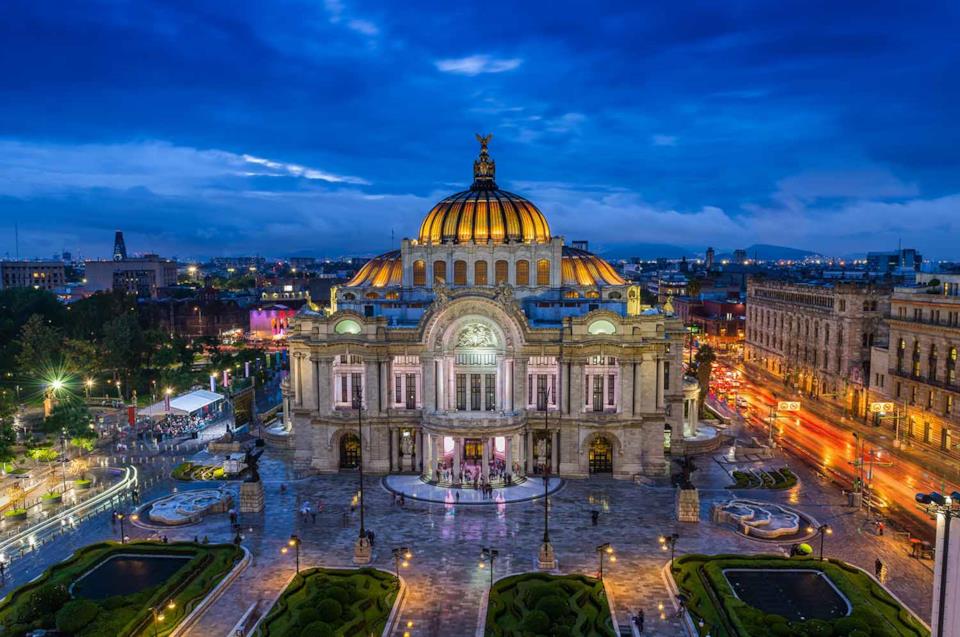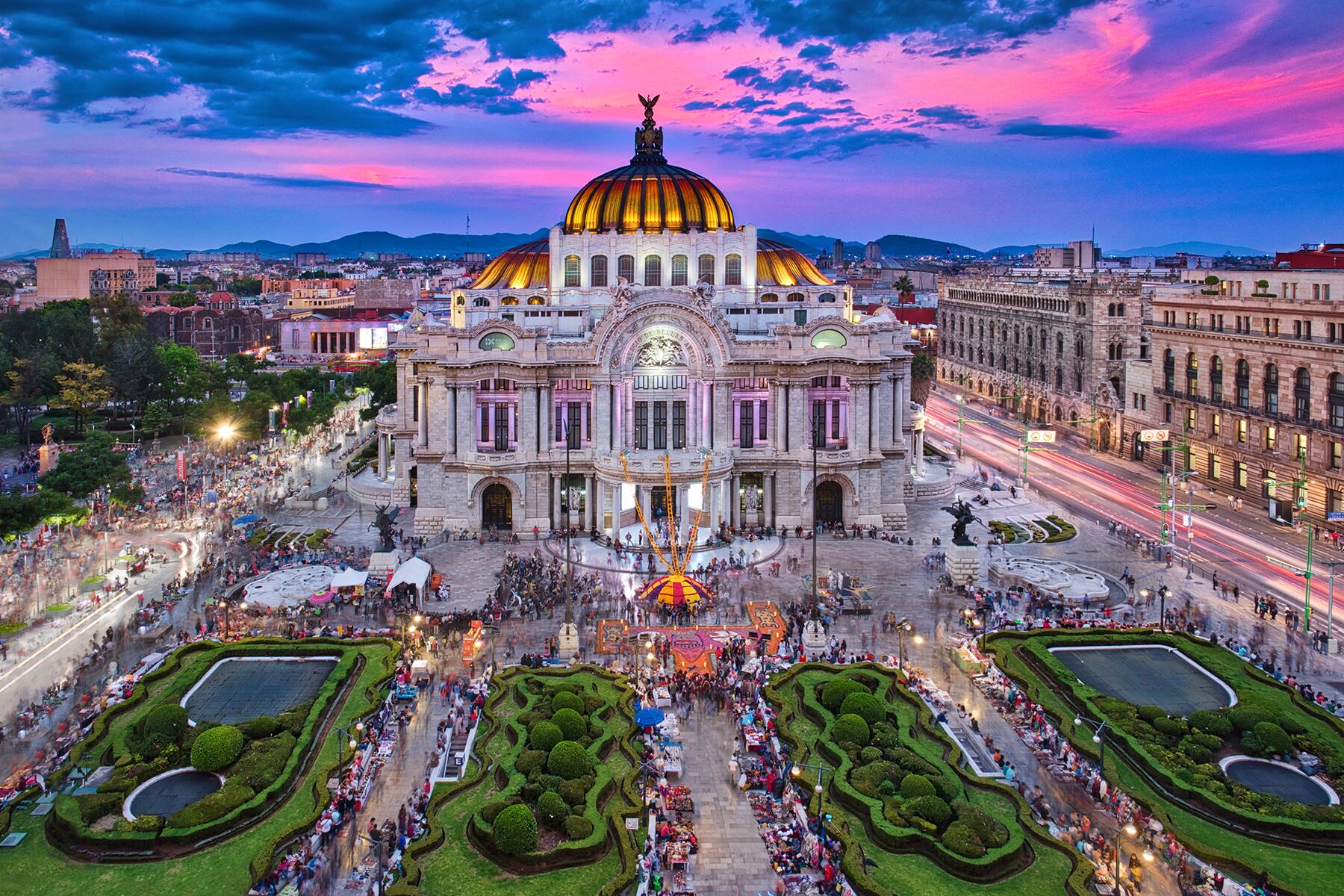
Mexico, a land painted with vibrant hues of history, culture, and breathtaking landscapes, beckons travelers with an irresistible allure. From ancient Mayan ruins that whisper tales of forgotten civilizations to sun-drenched beaches that kiss the turquoise waters of the Caribbean and Pacific, this diverse nation offers an unforgettable journey for every kind of adventurer. This comprehensive guide will unveil Mexico’s most captivating attractions, delve into its rich history, provide essential travel tips, explore accommodation and transportation options, and pinpoint the best times to experience its magic.
A Glimpse into Mexico’s Soul: A Rich and Complex History
Mexico’s history is a grand narrative, a confluence of indigenous brilliance and colonial conquest, culminating in a vibrant modern nation. Before the arrival of Europeans, sophisticated civilizations like the Olmec, Maya, and Aztec flourished, leaving behind awe-inspiring pyramids, intricate artwork, and advanced astronomical knowledge. The Aztec capital, Tenochtitlan, was a marvel of urban planning, built on an island in Lake Texcoco.

Related Articles about Mexico: A Tapestry of Wonders – Unveiling its Top Attractions and Essential Travel Guide:
- A Traveler’s Guide to Norway: Where Fjords Whisper and Northern Lights Dance
- Castles, Cobblestones, and Comfort: Unveiling the Best Hotels in the Czech Republic
- New York, New York: Your Ultimate Guide to the Best Hotels and an Unforgettable City Experience
- Vancouver: A Symphony of Nature and Urbanity – Your Ultimate Guide to the Emerald City
- The American Tapestry: A Comprehensive Travel Guide to the United States
The Spanish conquest, beginning in the early 16th century, dramatically reshaped the land and its people. The arrival of Hernán Cortés and his conquistadors marked the end of the Aztec empire and the dawn of New Spain. Spanish influence is evident in the architecture, language, religion, and cuisine that define Mexico today. The colonial era, spanning three centuries, was characterized by exploitation and the imposition of a rigid social hierarchy.
Mexico’s struggle for independence from Spain, ignited by Miguel Hidalgo y Costilla in 1810, was a protracted and bloody affair that finally succeeded in 1821. The 19th century was a tumultuous period, marked by internal conflicts, foreign interventions (including the Mexican-American War), and the rise and fall of various political regimes. The Mexican Revolution (1910-1920) was a pivotal event, a complex social and political upheaval that sought to address land reform, workers’ rights, and social justice. Its legacy continues to shape modern Mexico.
The 20th and 21st centuries have seen Mexico emerge as a major player on the global stage, grappling with challenges of economic development, social inequality, and security, while simultaneously celebrating its unique cultural heritage and fostering a thriving arts scene.
Mexico’s Crown Jewels: Top Attractions that Captivate the Soul
Mexico’s attractions are as diverse as its history. Here are some of its most iconic and unmissable destinations:
-
The Ancient City of Teotihuacan (near Mexico City): Standing as a testament to pre-Hispanic ingenuity, Teotihuacan is a UNESCO World Heritage site that predates the Aztecs. The sheer scale of the Pyramid of the Sun and the Pyramid of the Moon, along with the Avenue of the Dead, is breathtaking. Climbing to the top of these pyramids offers panoramic views and a profound connection to a lost civilization.
-
Chichen Itza (Yucatan Peninsula): Another UNESCO World Heritage marvel, Chichen Itza is arguably the most famous Mayan archaeological site. The iconic El Castillo (Temple of Kukulcan) is a masterpiece of astronomical alignment, famously displaying serpentine shadows during the equinoxes. Explore the Great Ball Court, the Temple of the Warriors, and the mystical Cenote Sagrado (Sacred Cenote), once a site of ritual sacrifice.
-
Tulum (Quintana Roo): Perched dramatically on a cliff overlooking the turquoise Caribbean Sea, Tulum offers a unique blend of history and stunning natural beauty. These Mayan ruins, once a fortified port city, provide a picturesque backdrop for exploration. Afterwards, descend to the pristine beaches below for a refreshing swim.
-
Mexico City (CDMX): A sprawling metropolis that pulsates with life, Mexico City is a cultural and historical powerhouse. Explore the Zocalo, the city’s grand central square, home to the Metropolitan Cathedral and the National Palace, adorned with Diego Rivera’s murals depicting Mexican history. Immerse yourself in the vibrant neighborhoods of Coyoacan (Frida Kahlo’s former home), Roma, and Condesa, brimming with art galleries, trendy cafes, and bustling markets. Don’t miss the National Museum of Anthropology, a world-class institution showcasing Mexico’s rich indigenous heritage.
-
Palenque (Chiapas): Nestled within the lush jungle of Chiapas, Palenque is renowned for its exquisite Mayan architecture, intricate stucco carvings, and the tomb of the legendary ruler Pakal. The Temple of the Inscriptions is a particularly significant structure, housing the sarcophagus of Pakal the Great. The surrounding jungle adds to the mystique of this captivating archaeological site.
-
Cancun and Riviera Maya (Quintana Roo): For those seeking sun, sand, and vibrant nightlife, Cancun and the Riviera Maya are world-renowned. Miles of pristine white-sand beaches, crystal-clear waters, and an abundance of resorts cater to every vacation style. Beyond the resorts, explore Isla Mujeres for a more laid-back vibe, or delve into the underwater world with snorkeling and diving excursions in the Mesoamerican Barrier Reef.
-
Oaxaca City (Oaxaca): A culinary and cultural capital, Oaxaca is a feast for the senses. Explore the UNESCO World Heritage historic center, admire the baroque architecture of the Santo Domingo de Guzman Church, and wander through vibrant markets like Benito Juarez Market and 20 de Noviembre Market, sampling local delicacies like mole, tlayudas, and chapulines (grasshoppers). The nearby archaeological site of Monte Alban, an ancient Zapotec capital, is also a must-visit.
-
San Miguel de Allende (Guanajuato): This charming colonial city, a UNESCO World Heritage site, is a magnet for artists and expatriates. Its cobblestone streets, vibrant bougainvillea-draped balconies, and stunning neo-Gothic Parroquia de San Miguel Arcangel create an enchanting atmosphere. Explore art galleries, boutique shops, and enjoy the city’s renowned culinary scene.
-
Copper Canyon (Chihuahua): A network of six interconnected canyons in the Sierra Madre Occidental, Copper Canyon is larger and deeper than the Grand Canyon. The scenic Chepe (El Ferrocarril Chihuahua-Pacífico) train journey offers breathtaking views as it winds through dramatic landscapes, stopping at charming towns and offering opportunities for hiking and cultural immersion with the indigenous Rarámuri people.
-
Guanajuato City (Guanajuato): Another UNESCO World Heritage gem, Guanajuato is a vibrant and colorful colonial city built in a ravine. Its labyrinthine alleys, underground tunnels (former riverbeds), and the iconic Teatro Juarez create a unique and captivating urban experience. The city is also known for its lively student population and the annual Cervantino International Festival.

Navigating Mexico: Essential Travel Tips
To ensure a smooth and enriching experience, keep these travel tips in mind:
- Visa and Entry Requirements: Check the visa requirements for your nationality well in advance of your trip. Most tourists from North America, Europe, and many other countries can enter Mexico for tourism purposes without a visa for up to 180 days.
- Currency: The official currency is the Mexican Peso (MXN). While US dollars are accepted in some tourist areas, it’s best to use Pesos for better exchange rates and for smaller purchases. ATMs are widely available, and credit cards are accepted in most hotels, restaurants, and larger stores.
- Language: Spanish is the official language. While English is spoken in major tourist areas, learning a few basic Spanish phrases will greatly enhance your interactions with locals and show respect for their culture.
- Safety: Mexico is a vast country, and safety can vary by region. It’s crucial to stay informed about current safety advisories from your government. Generally, sticking to well-trafficked tourist areas, avoiding displaying excessive wealth, and being aware of your surroundings are good practices.
- Health: Consult your doctor about recommended vaccinations before your trip. Drink bottled or purified water to avoid stomach issues. Pack a basic first-aid kit and insect repellent, especially if visiting jungle regions.
- Tipping: Tipping is customary in Mexico. For restaurants, a 10-15% tip is appreciated if not already included. Tip hotel staff, tour guides, and taxi drivers for good service.
- Bargaining: Bargaining is common in markets and smaller shops, but not in department stores or established boutiques. Do so respectfully and with a smile.
- Respect Local Customs: Be mindful of local customs and traditions. Dress modestly when visiting churches and religious sites.
A Home Away From Home: Accommodation Options
Mexico offers a diverse range of accommodation to suit every budget and preference:
- Luxury Resorts: Found primarily in popular beach destinations like Cancun, Riviera Maya, and Puerto Vallarta, these resorts offer all-inclusive packages, world-class amenities, and stunning ocean views.
- Boutique Hotels: These charming and often stylish hotels offer a more intimate and personalized experience, particularly in colonial cities like San Miguel de Allende, Oaxaca, and Guanajuato.
- Budget-Friendly Hostels: A great option for solo travelers and those on a tight budget, hostels are abundant in major cities and tourist hubs, offering dormitory-style rooms and private options.
- Vacation Rentals (Airbnb, VRBO): Renting an apartment or villa can be an excellent choice for families or groups, providing more space and the opportunity to experience local living.
- Eco-Lodges: For those seeking a connection with nature, eco-lodges are emerging in areas like Chiapas and the Yucatan Peninsula, offering sustainable and environmentally conscious stays.
Getting Around Mexico: Transportation Options
Mexico boasts a well-developed transportation network:
- Air Travel: For long distances, flying is the most efficient option. Mexico has a robust domestic airline network with frequent flights connecting major cities.
- Buses: Mexico has an extensive and reliable bus system, operated by companies like ADO, Primera Plus, and ETN. These buses are comfortable, affordable, and connect even remote areas. First-class buses offer amenities like reclining seats, onboard restrooms, and entertainment.
- Rental Cars: Renting a car offers flexibility, especially for exploring off-the-beaten-path destinations. However, be prepared for potentially challenging road conditions and driving habits.
- Taxis and Ride-Sharing: Taxis are readily available in most cities. In larger urban areas, ride-sharing apps like Uber and Didi are also a convenient and often more affordable option.
- Ferries: Ferries are essential for reaching islands like Cozumel and Isla Mujeres from the mainland.
The Sweet Spot: Best Time to Visit Mexico
Mexico’s diverse geography means its climate varies significantly. However, generally, the dry season from December to April is considered the best time to visit most of the country.
- December to February: Pleasant temperatures, minimal rainfall, and ideal for exploring historical sites and enjoying outdoor activities. This is peak tourist season, so expect higher prices and more crowds.
- March to April: Still dry and warm, with temperatures gradually increasing. This is a great time for beach destinations before the intense heat of summer.
- May to October: This is the rainy season in many parts of Mexico, particularly in the south and on the Pacific coast. While it can rain, it often comes in short, intense downpours, usually in the afternoon or evening, leaving the rest of the day clear. This period offers lower prices and fewer crowds, making it attractive for budget travelers. However, hurricanes can occur on the Caribbean coast from June to November.
- September and October: Can be particularly wet and humid in some regions.
Conclusion: An Enduring Enchantment
Mexico is a destination that lingers in the soul long after you’ve departed. Its ancient wonders, vibrant culture, warm hospitality, and diverse landscapes offer an unparalleled travel experience. From the awe-inspiring pyramids of the Maya and Aztecs to the sun-drenched shores of the Caribbean and the bustling energy of its cosmopolitan cities, Mexico promises a journey filled with discovery, adventure, and a profound connection to a rich and enduring heritage. So, pack your bags, open your heart, and prepare to be captivated by the magic of Mexico.





